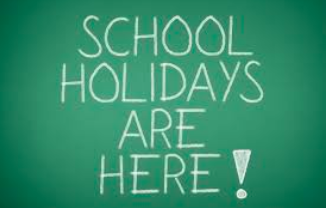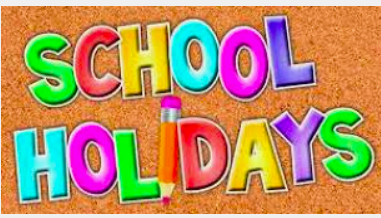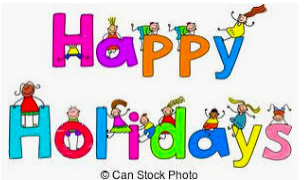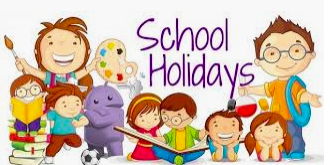7C1 Global Studies
Section outline
-
Kia ora...students and huge welcome to Coast whanua. My name is Mrs Ulika Singh and am you Global Studies teacher for this year.I hope you had a wonderful summer break and ready to venture with your learning at school.Our learning context is
He waka eke noa - strength of group enhances individuality / the most important thing in life is the connections we make with others. With this, we will examine who we are are/ where we come from/ the values we share that connect us to each other to build relations as well as identify skills we have or can learn to make new connections in our environment.

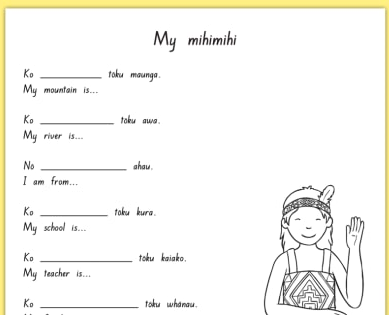
Achievement Objectives:
L3 Understand how the movement of people affects cultural diversity and interaction in New Zealand.L4 Understand how people pass on and sustain culture and heritage for different reasons and that this has consequences for people.
Success Criteria: I can/have...
- Understood our learning context by making links to ourselves/ friends and community
- Understood my immigration story and pepeha by creating a visual that describes me
Activities:
1) Let us brains storm our learning context and come up with ideas that link with us and our community eg: We are all in this together as it is our first day at school? Discus our excitement/ fears/ expectations and values we share!
2) Write down what are you most important values and skills.Let us also examine the meaning of ket words like respect/ religion/ culture/ traditions/ heritage/ immigration/ changes and adaptation
3)Reflect on your immigration story you had researched and discussed in week one. Did you or you parents immigrate from another country? Why did you leave? What re the various values and practices of of culture you were exposed too from your birth country or parents birth country? Is it different or similar to the values of living in New Zealand.
4) Think of all the values you consider as an import part of who you are are that has been shown and taught to you by your family, community and school. Using the information draw a plan of the different symbols, images, colours, flags, that make up your unique identity.
5) Think of a way you would like to showcase your cultural identity . For an example, design a digital papehe from your culture tat show your cultural side vs your Kiwiana side. Or perhaps it is integration of both your culture and new adopted Kiwi culture embodied as one. May be you only share one side of a culture than the other.
4) This can be created in various ways e.g.: The face mask or a bandana. However, I will allow your to express your cultural identity using any model or visual you like.Watch this for support:
5) Once you have completed this, share your pepeha with the class.
6) See images on the white board n cultural expressions: e.g.: flags, music instruments, cultural food, important traditional clothing, religious symbols, clots, phrases, dance form, values: respect, compassion, care, support and understanding.
Homework
Resources:
Mihi - introductions, Māori ki Te Whare Wānanga o Ōtākou ...
Sep 14, 2018 - Uploaded by Pepeha New ZealandPepeha is a way of introducing yourself in Māori. It tells a story of the places and people youPersonal beliefs, values, attitudes and behaviour | IAA
https://www.iaa.govt.nz › ... › Personal beliefs, values, attitudes and behaviourCultural identity Facts for Kids - Kiddle encyclop
EXPLORE / TŪHURA learning intentions:
- We are EXPLORING...to investigate students personalised immigration story and the vocabulary associated with this idea
- We are EXPLORING...to research the Treaty of Waitangi and its significance for us today in NZ
- We are EXPLORING...to discover the skills required to camp and research information on Camp Adair
- We are Exploring to research the various social issues youth in NZ are exposed to and discover ways in which support can be provided to reduce these.
EXPLORE / TŪHURA learning intentions:
- We are EXPLORING...to investigate students personalised immigration story and the vocabulary associated with this idea
- We are EXPLORING...to research the Treaty of Waitangi and its significance for us today in NZ
- We are EXPLORING...to discover the skills required to camp and research information on Camp Adair
- We are Exploring to research the various social issues youth in NZ are exposed to and discover ways in which support can be provided to reduce these.
-
Kia ora...students and welcome to week 2. For this week we will examine the treaty of Waitangi and explore how our values may link to the treaty.
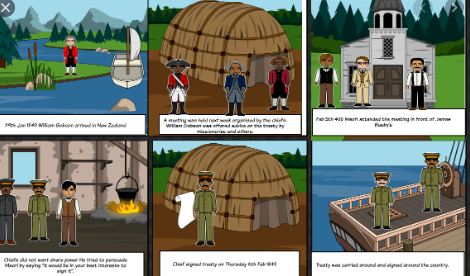
Success Criteria: I can/have...
- Researched the cultural identity of Maori and British cultures from the past to the present
- creatively design a digital story board that explore s early settlers and the Treaty of Waitangi and shows my values that connect with the Treay
Activities:
- Watch video on Early Maori cultures in NZ and answer the following questions; When did Maori people arrive in NZ and from which locations in the world.How did they arrive here. Describe the waka. Discuss the types of tribes found at that time and where did they settle. Discuss the foods Maori eat and how they collected as well as prepared traditional foods. Show the cultural dress/ music/ art and dance that is symbolic to them. What are the languages spoken.
- Examine the conflict between British and Maori people.Also explain with images the meaning of the treaty of Waitaingi.
- Do you think Maori cultures identity today is the same from few hundred years ago. Explain. Also show how the "west has influenced local Maori Identity.
- how does this treaty have greater significance to our multi- cultural society today. Think of values and connect your reasons to this.This must be explored in good detail.
- Indicate your information on a story board. See example in the classroom.
Resources:
The Maori - New Zealand in History
history-nz.org/maori.htmlwww.canva.com › create › storyboardsFree Online Storyboard Maker: Design a Custom Storyboard ...
EXPLORE / TŪHURA learning intentions:
- We are EXPLORING...to investigate students personalised immigration story and the vocabulary associated with this idea
- We are EXPLORING...to research the Treaty of Waitangi and its significance for us today in NZ
- We are EXPLORING...to discover the skills required to camp and research information on Camp Adair
- We are Exploring to research the various social issues youth in NZ are exposed to and discover ways in which support can be provided to reduce these.
-
Kia ora...students. This week will complete your research on the Treaty and its relevance today in our multicultural society. Also create your own Treaty and share with the class.This can be added to your storyboard created last week.
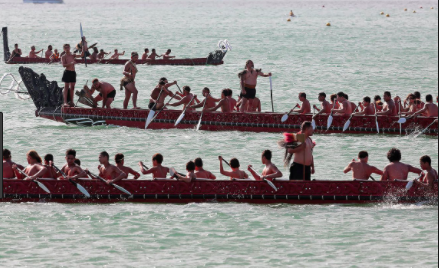
Success Criteria: I can/have...
- Researched the cultural identity of Maori and British cultures from the past to the present
- creatively design our project boards
Activities:
- Watch video on Early Maori cultures in NZ and answer the following questions; When did Maori people arrive in NZ and from which locations in the world.How did they arrive here. Describe the waka. Discuss the types of tribes found at that time and where did they settle. Discuss the foods Maori eat and how they collected as well as prepared traditional foods. Show the cultural dress/ music/ art and dance that is symbolic to them. What are the languages spoken.
- Examine the conflict between British and Maori people.Also explain with images the meaning of the treaty of Waitaingi.
- Do you think Maori cultures identity today is the same from few hundred years ago. Explain. Also show how the "west has influenced local Maori Identity.
- how does this treaty have greater significance to our multi- cultural society today. Think of values and connect your reasons to this.
- Complete the design of your own Treaty showing the values and ethics. This can be added to your storyboard created last week.
Resources:
The Maori - New Zealand in History
history-nz.org/maori.htmlEarly settlement - The arrival of Maori - NewZealand.com
Maori Foods & Recipes | Resources | New Zealand Now
https://www.newzealandnow.govt.nz/resources/maori-foods-and-recipesMāori clothing and adornment – kākahu Māori – Te Ara Encyclopedia ...
www.teara.govt.nz/en/maori-clothing-and-adornment-kakahu-maoriNgāpuhi war canoe at Waitangi | NZHistory, New Zealand history online
-
Kia ora...students and welcome to week 4. For this week you will be researching the location/ geography and activities of your camp site, Camp Adair.
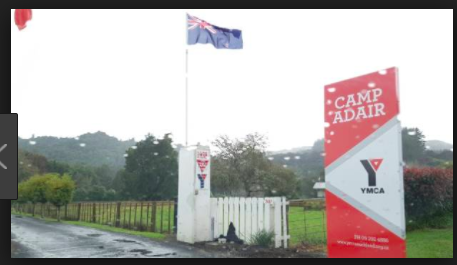
Learning Intentions: We are learning to (WALT)...
- Calculate distance from MHJC to Camp Adair
- Use google maps to show location and geographical features
- Understand the flaura and fauna here
- Investigate the rules and expectations whilst on site.
- Research the various activities you will be involved with
- Explore key values and skills you should display camp.
Success Criteria: I can/have..
Examined in detail the key information about my camp site, camp Adair.
Activities:
Why do you think attending camp is important. What are the skills you have that would be beneficial to you by attending camp. What skills do you think you will be exposed to that are new that would be important life skills. Describe these skills in detail.
Researching our Camp Location: Create a visual that has the following information.
MAP and Distance from MHJC: AREA AND ON SITE
HISTORY
CULTURES
DIVERSITY: FALURA AND FAUNA
FACILITIES
ACTIVITIES
EMERGENCY PROCEDURES
3) See video on students that have attended camp. what are your views.- What is meant by values and skills. Create a list of what values and skills you have that will be necessary to display and use effectively at camp e.g.: ability to listen well and lend a helping hand. Or the skills of biking and supporting people who are not good bikers. Also think of what skills you with like to develop whist you are at camp.
- Create a badge or a certificate that showcases you have attained the important skills for attending camp.
- Create a fun menu that you think would be ideal for camp. Use Canva to create a breakfast/ lunch and dinner option.
- Homework:
- Work on your Assessment task: Creating your Infographic on Flatbush:
Task Instructions:1)You will work in a team of 3 or 4 students
2) Read the resources on MHJC online, as well as additional materials you may find.Also see resources on how to create an infographic.
3) Create a plan before you begin writing.
4) Select two ideas that you want to research in detail eg: Housing/ transportation/ Schools, shopping/ farming.
4) Your infographic should have the following ideas: Introduction, History, changes today, Reasons for changes, Our Views and Conclusion.
5) Must submit as a printed visual on the due date.
PLAN & DO / WHAKAMAHI learning intentions:
- We are PLANNING... to create a story board on the treaty of Waitangi and connect this to the values we share as New Zealanders.
- planning to learn and develope our skills on teamwork/ friendship and collaboration.
- panning to present our understanding of of experiences at camp through a photography expression
- planning to demonstrate we can share ideas and work effectively well with others
FOCUS / ARONGA learning intentions:
- We are FOCUSING...on developing our knowledge on the Treaty of Waitangi
- We are FOCUSING...on identifying the values and cultural beliefs of Maori cultures and see links to our own cultures
- We are FOCUSING...on developing our values and skills required for camp such as team work/ friendships / leadership/ compassion/ respect/ understanding/ time management/ responsibility
-
Kia Ora Students
There will be No Global Studies this week as you are attending camp!
However, you will need to write a review about your camp experience.Be sure to have photos and showcase your strengths with leadership/ friendship/ problem solving and collaboration.
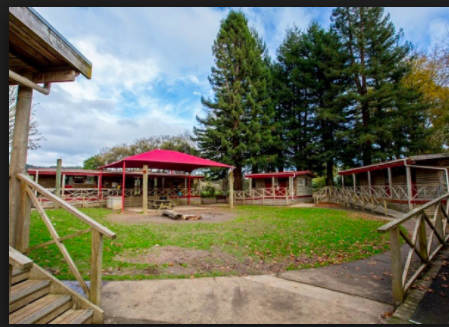
Task Instructions:1)You will work in a team of 3 or 4 students
2) Read the resources on MHJC online, as well as additional materials you may find.Also see resources on how to create an infographic.
3) Create a plan before you begin writing.
4) Select two ideas that you want to research in detail eg: Housing/ transportation/ Schools, shopping/ farming.
4) Your infographic should have the following ideas: Introduction, History, changes today, Reasons for changes, Our Views and Conclusion.
5) Must submit as a printed visual on the due date.
FOCUS / ARONGA learning intentions:
- We are FOCUSING...on developing our knowledge on the Treaty of Waitangi
- We are FOCUSING...on identifying the values and cultural beliefs of Maori cultures and see links to our own cultures
- We are FOCUSING...on developing our values and skills required for camp such as team work/ friendships / leadership/ compassion/ respect/ understanding/ time management/ responsibility
-
Kia ora...students and welcome to week 6. This week you will write a review snd reflection based on your Camp experience.Also you will create a marketing tool to promote attending camp to future year &'s students at MHJC.
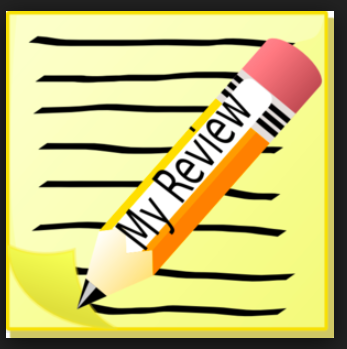
Learning Intentions: We are learning to (WALT)...
- Reflect on our positive experience and well as challenges at camp Adair
- use photographs( if any) to document your experience
- Critically apply ways to overcome the challenges you face
- Create a poster to market Camp Adair to future year 7 students
- Success Criteria: I can/have...
- Written a review on my camp experience and created a marketing tag to promote this site/experience
- Learnt and understood Maori words that link to our values
- Activities
- What are the benefits of attending camp. What skills have your learnt and shred with others.
- Discuss the challenges you have been through and how you may have overcome these.
- Explain using instructional writing techniques one activity you participated with that you enjoyed
- By using this template: reflect on your camp experience and write a review: Location/ Team members/ Leaders/ Positive experiences/ Challenges/ Overcome Challenges.Image based. Making of a poster will be taught in class.
- Do you think this experience has enabled you to grow and become more involved with other students.
- Create a POSTER on camp Adair using CANVA or any other creative site to design a poster. Have a title/ images/ key information and why it is great to attend this camp .
- Research Maori words and phrases that link with our key values of respect/ compassion. friendship.
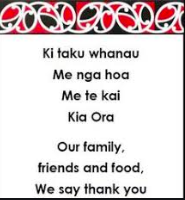
 Homework:
Homework:
PLAN & DO / WHAKAMAHI learning intentions:
- We are PLANNING... to create a story board on the treaty of Waitangi and connect this to the values we share as New Zealanders.
- planning to learn and develope our skills on teamwork/ friendship and collaboration.
- panning to present our understanding of of experiences at camp through a photography expression
- planning to demonstrate we can share ideas and work effectively well with others
-
Kia ora 7C1,
I'm really looking forward to our Global Studies session.:)
As discussed in class, our session on Tuesday will focus on skills or special celebrations and our Thursday and Friday session will focus on our context:
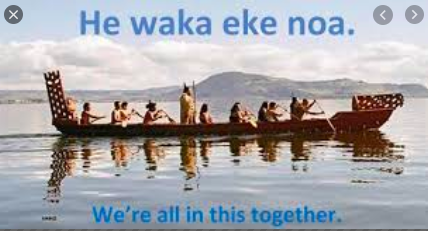
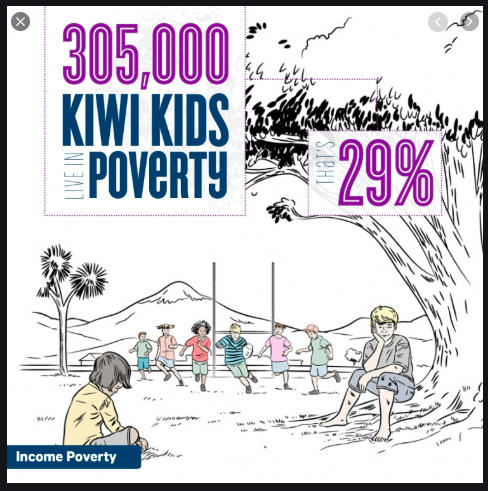
Context:
He Waka Eke Noa
Activities:
- Teacher discussion on the various social issues children/ youth are exposed to in New Zealand. See posters on child poverty and bullying. what are your views on this this. Do you think this problem occurs elsewhere in the world. What are the possible reasons why children are affected by
- Discussion in class about issues that effect the youth in our society today. Think of possible examples / impacts and consequences to these issues.
- See video on child poverty as well as bullying at schools.
- By working in groups of four think of one issue that is of concern to the youth today. Ideas can relate to school bullying, peer pressure, child poverty, social media abuse, etc.
- Step 1 create a visual plan on what you what to address and how to going to make a difference to get through this problem. This can be a map or a flow chart that alos uses important vocabulary and pictures. See example on the white board.
- Step 2: think of the medium which you will present your idea. Example video/ role play of chart/ website.
- Step 3: research your your idea in depth: definitions / location /statistics/ causes or reasons/ impacts onto the youth/ who supports (family/ school friends/ others)
- Step 5: create a survey based on this issue and interpret the results( extension lesson)
- Step 4; introduce effective yet realistic ways to stop/ reduce or resolve this issue
- present your ideas as a group in week 9
Learning Intentions: We are learning to (WALT)...
- To understand one social issue that effects the youth in our community today
- create awareness of this issue through role play/ video/ website
- Show ways to stop/reduce and resolve this problem.: Engage with step one and two for this week
Success Criteria: I can/have...
- Understood one idea/ social problem that effects the youth in our community
- Bring awareness and to stop/ reduce or resolve this issue.
- Engaged with step one and two for this wee
Resources:
statistics on problems affecting youth in New Zealand/ images/Homework:
-
Kia ora 7C1,
I hope that you are starting to settle into the routine of having me as your Global Studies teacher, and our routines for our session.....now I look forward to you showing me how responsible you are as you settle into working from home during our lockdown.
Remember : He waka eke noa!
1) I'd like you to begin your session with our usual 3 minute mindfulness activity:
2) It's time for our weekly current events quiz. Remember our quiz is about developing your current events knowledge. Please try not to look at the answers until you are ready to mark your work. Please work at the back of your Global Studies book - or use a spare book or refill if you are unable to find your book.
The quiz can be found on your Google Classroom page.
https://classroom.google.com/u/0/c/NTAzODMxODcyNzNa
Our session for today will be focussed on ANZAC Day.

Activities:
Please begin your "ANZAC' session by going through the slide show that we started last week. This can be found on our Google class.
https://classroom.google.com/u/0/c/NTAzODMxODcyNzNa
Context:

Thinking of the ANZAC day, how can this be connected to our context He waka eke noa? How are we all in this together?
Please complete the glossary and ANZAC Fact Hunt sheet on Google Classroom.
- Learning Intentions: We are learning to (WALT)...
- Understand the meaning of ANZAC Day
- Apply our research skills to get facts about ANZAC Day and events before and after.
- Success Criteria: I can/have...
- Understand why we celebrate ANZAC Day.
- Share a fact about ANZAC Day, events before or after that I have researched.
Resources:
Refer to Google ClassroomHomework:
Complete any class assigned work that was not completed during the session.
- Learning Intentions: We are learning to (WALT)...
-
Kia ora 7C1,
Welcome to Term 2! I hope that you are all well and that you have had a restful break!
Remember : He waka eke noa!
1) I'd like you to begin your session with our usual 3 minute mindfulness activity:
We ended Term 1 talking about Poverty. A huge thank you to all students who uploaded your image of what you thought Poverty was. Those who haven't uploaded your image, please do so now.
- Learning Intentions: We are learning to (WALT)...
- Understand the meaning of Poverty
- Apply our research skills to get facts about Poverty and foodbanks around the world and in New Zealand.
- Success Criteria: I can/have...
- Understand the meaning of the word Poverty.
- Explain why we have foodbanks
- Explain the impact of foodbanks on the community
- Show an understanding of our context He waka eke noa, to poverty and foodbanks.
- Share facts that I have researched about Poverty and Food banks in New Zealand.
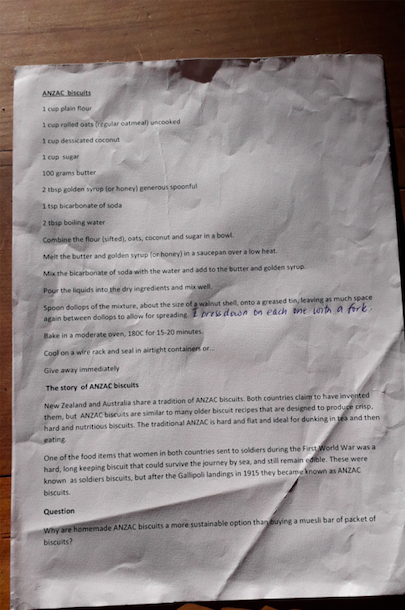

Resources:
Refer to Google ClassroomWe will be going through all your ANZAC work on Friday.
Mrs Dada has baked her ANZAC cookies!

I used this yummy, very easy recipe that Mr Gardi shared with all of us.:)
Can you spot the extra information shared on the recipe page?
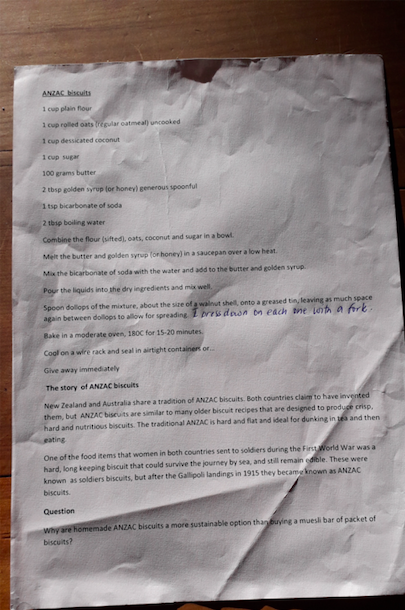
Activities:
A reminder of your "ANZAC' activities that we ended the term with. This can be found on our Google class. I look forward to seeing your poppies that you were attempting to make last term.

https://classroom.google.com/u/0/c/NTAzODMxODcyNzNa
Context:

A reminder that I will be looking at your glossary and ANZAC Fact Hunt sheet. This must be completed on Google Classroom by our session on Friday please. A reminder that you had session time last term to complete this.
- Learning Intentions: We are learning to (WALT)...
- Understand the meaning of ANZAC Day
- Apply our research skills to get facts about ANZAC Day and events before and after.
- Success Criteria: I can/have...
- Understand why we celebrate ANZAC Day.
- Share a fact about ANZAC Day, events before or after that I have researched.
Resources:
Refer to Google ClassroomHomework:
Complete any class assigned work that was not completed during the session.
- Learning Intentions: We are learning to (WALT)...
-
Kia ora 7C2,
Welcome to Week 2.
Before you begin your activities for this week, please ensure that all your ANZAC activities and Foodbank activities are uploaded on Google Classroom.
Please watch the video below on the Battle of Gallipoli.
For our session today we will be learning about history roads.
A history road is a type of timeline; you put events in the order they happened, but you don't have to show the even passing of time.

A history road:
takes the form of a widening road coming towards you
has the oldest event at the beginning of the road
may have symbols or sketches to go with the events.
As an activity about sharing information about yourself....
Learning Intentions: We are learning to (WALT)...
Draw a history road, sharing the highlights of your life with us.
Success Criteria: I can/have...
Draw a history road which is clear and easy to read and understand
Activities:
Step 1 (Brainstorming) : Using www.bubbl.us or any other digital graphic organisers, brainstorm all the memorable events in your life. Write down key words only. Please upload a screenshot on Google Class.
Step 2 (Deciding) : Choose 10 of those events and write down the year in which each occurred and a phrase or sentence about each event. Try to keep them in order of occurrence.
Step 3 (Selecting) : Read through your ten phrases/ sentences and select seven that you consider to be the most important.
Step 4 (Interpreting) : Draw a symbol or picture for each of the seven phrases or sentences.
Step 5 (Presentation) : Use A4 paper.
- You can decide whether you would like to work digitally or not.
- Remember to use appropriate lettering for your name.
- What colours are you going to use?
- Work in landscape.
- Your road needs to be drawn from corner to corner.
- Draw the road narrower at the top and thicker at the bottom...Put a few curves in it.
- Put the earliest event at the top of the road and the most recent event at the bottom of the page.
Place the rest of the events in order along the road.
Draw symbols/ pictures next to the respective dates.
Be creative and have loads of fun!!! Don't forget to email me if you have any questions please. :)
-
Kia ora 7C1,
I hope that you all had a lovely ANZAC Day and enjoyed your long weekend.
Here's a reminder of What is ANZAC Day?
For our session today we will start working on our history roads.
A reminder that a history road:
takes the form of a widening road coming towards you
has the oldest event at the beginning of the road
may have symbols or sketches to go with the events.

As an activity about sharing information about yourself....
Learning Intentions: We are learning to (WALT)...
Draw a history road, sharing the highlights of your life with us.
Success Criteria: I can/have...
Draw a history road which is clear and easy to read and understand
Activities:
Step 1 (Brainstorming) : Using www.bubbl.us or any other digital graphic organisers, brainstorm all the memorable events in your life. Write down key words only. Please upload a screenshot on Google Class.
A huge thank you to Danyar for recording the ideas that students in our Google Meet shared. Feel free to use as many of these ideas as you want to.
1.First day of school
2. First time getting born
3.first birthday
4.first words
5. First step
6.first friend
7.first tooth
8.first pet
9.your first home
10.first time going to kindergarten
11.first time getting stung
12.first time getting an award
13.first country you visited
14.first time you got a haircut
15.first time getting an injection
16.first thing you saw your parents
17.first time you played a sport
18.first time having a shower
19.first time having getting soap in your eyes
20.first time going to the nurse
21.first time having medicine
22.first time seeing your classroom
Step 2 (Deciding) : Choose 10 of those events and write down the year in which each occurred and a phrase or sentence about each event. Try to keep them in order of occurrence.
Step 3 (Selecting) : Read through your ten phrases/ sentences and select seven that you consider to be the most important.
Step 4 (Interpreting) : Draw a symbol or picture for each of the seven phrases or sentences.
Step 5 (Presentation) : Use A4 paper.
- You can decide whether you would like to work digitally or not.
- Remember to use appropriate lettering for your name.
- What colours are you going to use?
- Work in landscape.
- Your road needs to be drawn from corner to corner.
- Draw the road narrower at the top and thicker at the bottom...Put a few curves in it.
- Put the earliest event at the top of the road and the most recent event at the bottom of the page.
Place the rest of the events in order along the road.
Draw symbols/ pictures next to the respective dates.
Be creative and have loads of fun!!! Don't forget to email me if you have any questions please. :)
-
Kia ora 7C1,
During your sessions this week you will be working on your final copy of your history road.
A huge thank you to Nevaeh for sharing her history road which she is currently working on, using Canva.
Well done! Nevaeh!

Students please remember that your final copy will be used for our class display when we get back to school - so please keep it safe.
Learning Intentions: We are learning to (WALT)...
Draw a history road, sharing the highlights of your life with us.
Success Criteria: I can/have...
Draw a history road which is clear and easy to read and understand

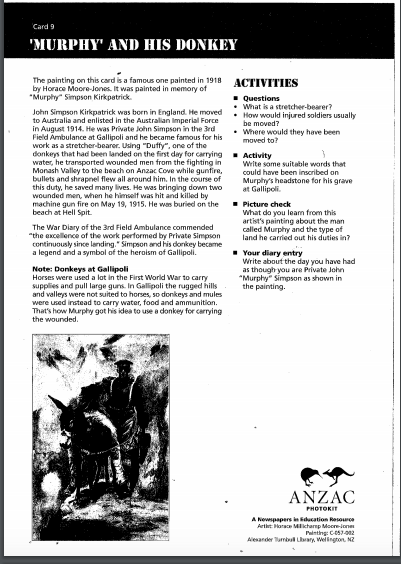


Please complete the above ANZAC Activities on a doc to be uploaded on Google Classroom. These activities are optional activities for this week, for students who have completed their history road. -
Kia ora 7C1,
A reminder that we have a Google Meet session on Tuesday at 8.30am (session 1).
Thank you to those students who have uploaded their work (see screenshot below). I am still waiting for a few students to get this completed.
Your History Road should be completed by now and your 5 planning steps should be uploaded on Google classroom. Well done to those of you who have already done this. :)
Lockdown diary...Let’s make history!

So you’ve been stuck at home on lockdown from Covid-19? Well let’s make the most of it this week during Global Studies with the highlights of your lockdown, showing some isolation appreciation and creating your very own lockdown diary!
Please refer to the Lockdown Diary PDF guide on MHOL and Google Classroom. This will be discussed further during our Google Meet on Tuesday at 8.30am (session 1)
Learning Intentions: We are learning to (WALT)...
- We are learning to record detailed information about a historical event - Covid-19 Lockdown
Create a personalised diary about the positive impacts of Covid-19 for you as an individual.
Success Criteria: I can/have...
Create a detailed diary sharing my personal experiences. (Refer to attached Lockdown Diary guide).
- Using the attached Lockdown Activities Guide, you are required to create your very own Lockdown Diary
- This can be completed any way that you choose - in a book, on loose sheets of paper that you can put into a folder, you can print the attached diary sheets that you would like to use and complete your diary on the actual sheet or you can present it digitally in any way that you choose or by using the attached sheets digitally: https://www.mylockdowndiary.com/
- Have fun doing this activity and use your family members to help you with ideas and to share some of their thoughts about isolation appreciation!
Remember to email me if you have any questions or if I can support you in any way! :)
-
Kia ora 7C1,
Welcome back!
This week we will continue with our Lockdown Diary.
Lockdown diary...Let’s make history!

So you’ve been stuck at home on lockdown from Covid-19? Well let’s make the most of it this week during Global Studies with the highlights of your lockdown, showing some isolation appreciation and creating your very own lockdown diary!
Please refer to the Lockdown Diary PDF guide on MHOL and Google Classroom. This will be discussed further during our Google Meet on Tuesday at 8.30am (session 1)
Learning Intentions: We are learning to (WALT)...
- We are learning to record detailed information about a historical event - Covid-19 Lockdown
Create a personalised diary about the positive impacts of Covid-19 for you as an individual.
Success Criteria: I can/have...
Create a detailed diary sharing my personal experiences. (Refer to attached Lockdown Diary guide).
- Using the attached Lockdown Activities Guide, you are required to create your very own Lockdown Diary
- This can be completed any way that you choose - in a book, on loose sheets of paper that you can put into a folder, you can print the attached diary sheets that you would like to use and complete your diary on the actual sheet or you can present it digitally in any way that you choose or by using the attached sheets digitally: https://www.mylockdowndiary.com/
- Have fun doing this activity and use your family members to help you with ideas and to share some of their thoughts about isolation appreciation!
-
Kia ora 7C1,
From this week we begin a new context titled The Earth Is Healing. Our planet has undergone serious changes due to both human activities and natural disasters. However, during the Covid 19 pandemic, where billions of people were forced into lockdown, our planet began to show signs of growth and cleansing. We will discover what are some of the problems that have led to environmental destruction before the pandemic and examine how some of these problems are reducing on earth. Furthermore, you will creatively and thoughtfully think of long term solutions to environmental protection that would benefit our future generations.
Success Criteria: I can/have...
- brainstorm the meaning of Our Earth Is Healing
- discovered new vocabulary and definitions
- list the various environmental problems found globally before covid 19
- created a poster : testing prior knowledge on pollution reduction
- identified earth challenge app and log in data
Activities:
- Document all your work on google docs: What does the Earth is healing mean to you. Write at least 3 ideas. eg: Our planet is experiencing less human activity and therefore less pollution is produced.
- Think of ten ideas/ words that link with the earth is healing. Here are a few: pollution levels have declined/ less human activity/ greener grass/ cleaner air/ ozone hole/ traffic congestion reduced/ greenhouse gases/
- Discover the meaning of the following words: environment/ greenhouse effect/ global warming/ pollution/ natural resources/ exploitation/sustainable resources/.
- Examine the picture below and write 3 ideas on problems that occurred before covid 19 and how these are improving.
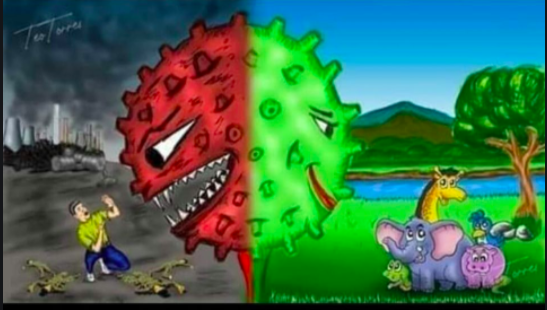
4)Why do you think people are responsible for the earths destruction ie pollution and global warming/ List 3 reasons.
5) Testing your prior knowledge: By referring to the problems such as ocean pollution, land pollution and, air pollution in crowed cities, create a poster to showcase how litter can be reduced in your home, before it reaches the landfill. Think of sustainable packaging and using recycled materials.Use Canva.com.
see this example:

6) Extension activity : refer to this link:
7 eco-friendly actions for kids during the pandemic | Earth Day
and download the earth challenge app. Here you log in air quality or plastic pollution in you local area. I suggest yo use you home/ immediate neighbourhood to discover information. Plot a daily log to show how much plastic you have found in your neighbourhood over a 5 day period.Discover if this is lessening in Alert 2, compared to Alert level 3 and 4 or increasing. Think of where the journey of a plastic bottle would go, if it does not reach a bin.Image of the app here:

7)What action can be taken in your neighbour to reduce and stop this problem
Homework/ Resources:
New Evidence Shows How COVID-19 Has Affected Global Air ...
COVID-19 Lockdown Illustrates Connection Between People ...
EXPLORE / TŪHURA learning intentions:
- We are EXPLORING...to observe how the Earth is healing through first hand witnessing of our neighbourhood, and researching ideas that showcases evidence
- We are EXPLORING...to experiment with the Earth Challenge app, so that I can record the amount of rubbish i see in my neighbour during lockdown and after lockdown.
- We are EXPLORING...to question why is the earth healing now compared to before lockdown
- We are EXPLORING..to discover new words and concepts based on Environmental sustainability
- We are EXPLORING..to recognise the influence human activities have onto resources on earth
-
Kia ora 7C1,
From this week we aim to examine what caused global warming, before Covid-19.
In depth reading and research is required is required whereby you are referring to various readings, cartoons, posters and videos
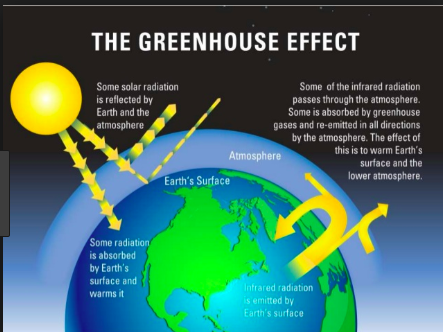
Our context: The Earth is Healing
Learning Intentions: We are learning to (WALT)...
- research your chosen environmental issue using the checklist criteria
- research your ideas in depth
- construct sentences and paragraphs that are written in your own words and using new vocabulary
Success Criteria: I can/have...
- Successfully researched some ideas on my chosen environmental problem
- Constructed sentences and paragraphs that are well edited and have new vocabulary
Activities:
- Do Now activity: Read the article below on environmental problems in New ZealAnd. Discuss your thoughts on this as a class.What solutions will you suggest for this issue of Waste Runoff.
NZ's 'clean environment' under threat - NZ Herald
- Define what is meant by the following concepts. Show examples.Biodiversity, contaminate, ecology, homeostasis, conservation, sustainability.
- Understanding the greenhouse effect. Study this image and discuss your views on what is climate change.
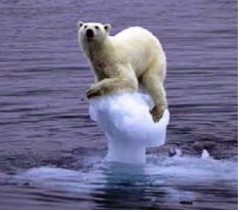
4. See video on what is climate change and how this has affected our planet.Discuss how climate change is caused.Write key words such as carbon emissions/ ozone layer/ CFCS/ ultra violet light/ and ice melting.
5.By working in your teams, begin to research your chosen environmental issue in the world. Create a word bank so that you are using new and important terminology for your research
FOCUS / ARONGA learning intentions:
- We are FOCUSING...on developing our understanding on environmental sustainability
- We are FOCUSING...identifying the various ways mad kind has impacted onto destroying earths natural resources
- We are FOCUSING...describing acts of exploitation such as pollution that leads to Global warming, and plastic pollution
- We are focussing on discussing the impacts and consequences of these acts of environmental destructions
- We are focussing on responding to these problems by thinking of sustainable solutions
-
Kia ora 7C1,
This week we will examine how OUR OCEANS and coast lines are changing due to the influence of the Pacific Garbage Drift.
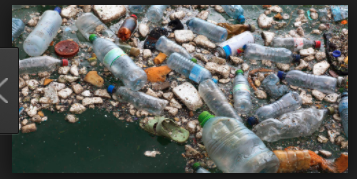
Achievement Objectives: Understand that events have causes and effects.Understand how formal and informal groups make decisions that impact on communities.
Big Idea: Our Earth is Healing
Learning Intentions: We are learning to (WALT)...
- determine what is the Pasific Garbage Drift and its history of origination
- Analyse the journey of plastic from factory to oceans:
- Examine what is consumer responsibility
- Examine the impacts of plastic pollution in the ocean
- Find possible solutions to reduce this problem.
Success Criteria: I can/have...
- Understood the cause and impacts of Pacific Pacific drift on oceans and coastlines.
Activities:
- Define what is Pacific Plastic Drift also known as the garbage patch of the pacific ocean. Research your answer.
- Provide a map to determine the location and size of the garbage patch.
- See images on white board of what this plastic drift looks like. How do you feel about this issue.
- Research when was the plastic drift first discovered and whom is responsible for this global pollution activity.
- Show a graph that highlights this problem . Discuss what the graph means.
- What impacts do you think plastic pollution creates to marine life/ oceans/air and coastlines. Discuss with images
- Refer to the picture below of the people on their boat in the middle of plastic pollution in pacific. What do you think are the two possible reasons they are there?
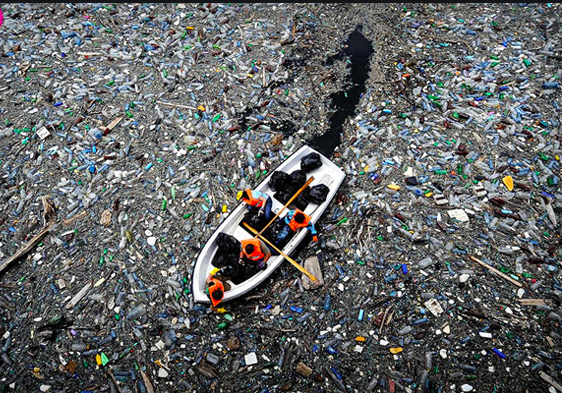
- With a flow chart discuss the journey of plastic from factories to oceans. Discuss your views here as well.
- Provide ways in which plastic can be reduced and also ways of this not entering the ocean.
- Create a word bank with definitions that include: biodegradable/photodegradable/consumer awareness/ pollution/
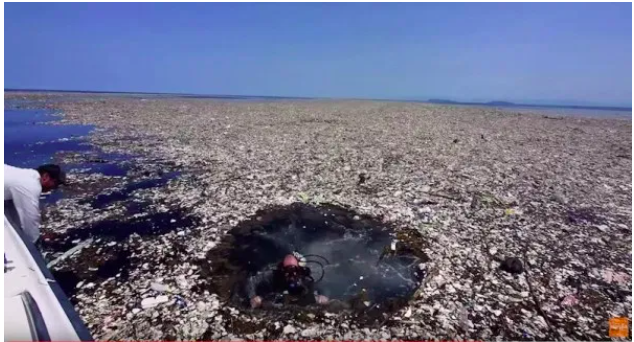
Homework:
Complete any class activities that you have not finished during our session time.PLAN & DO / WHAKAMAHI learning intentions:
- We are PLANNING... to design a model or prototype that helps the environment, people and possibly the economy post Covid 19
- We are planning to consult with scientists. engineers or specialists about our innovation
- We are planning to collaborate with a team to produce an innovative design
- We are planning to solve one identified environmental problem that may continue to pick up or worsen post Covid 19
- We are planning to share our ideas to support the Science Fair held in Coast Whanau
-
Kia ora 7C1,
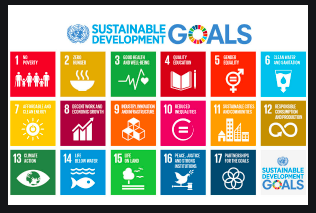
We will continue to examine the causes to global warming, before Covid 19.In depth reading and research is required is required whereby you are referring to various readings, cartoons, posters and videos.
To begin, we are going to recap the Greenhouse effect to ensure that we all remember what the Greenhouse Effect is:

Big Idea: The EARTH IS HEALING
Learning Intentions: We are learning to (WALT)...
- Define key words linked with Environmental sustainability AND THE COVID 19 PANDEMIC
- Create a bank of ideas that link with environmental problems
- use a variation of resources so that information presented is diverse, unique and reflects good research and thinking
- Examine issues discussed as teaching examples in this eg: Climate Change
- Success Criteria: I can/have...
- Understood our Coast Whanau logo and will connect how our values links with the environmental issues we choose to research.
- Started to research my environmental topic in-depth
- Examined the controversies of climate change( debate)
Activities:
- Introduction to : what is Environmental Sustainability. Students may use coggle.com to create a word bank such as: Environment, pollution, exploitation, conservation, management, protection,
- Teacher example to environmental issues Do Now: Examine the cartoon on climate change: There are many controversial theories to climate change. What is your view and why.
- Draw a sketch on how you see earth in 100 years years from now. Does it reflect an ecological balanced environment, with clean technology in use or highly industrialised with earth elements out of sync. Explain your response.
- What is global warming. See images on the white board. Write a short paragraph on your ideas.
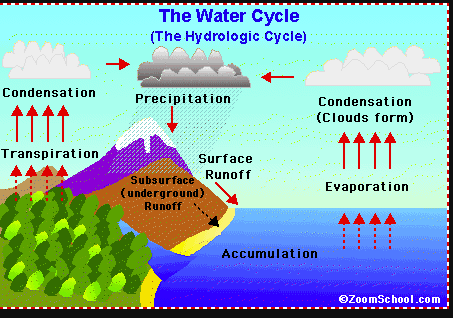
Activities:
- Research and paste a digram on the structure of the earth and indicate what are the different components.
- What us meant by magnetic field? examine the materials earth is made up of which is nickel iron. What do you understand by this material.
- Research and paste a diagram on earths atmosphere. List the different parts to the atmosphere and what gases may be found in each part.What is the purpose of the ozone layer?
- See video on earths atmosphere and list important vocabulary in your online document.
- Research and paste an image of the water cycle. Write a short paragraph on how the water cycle is formed.
- List with images the various clouds in earths atmosphere.
- What would happen to cloud formation if there was a drought? Explain with reasons.
- By testing your prior knowledge what id global warming. List important words by that link with this.
- Research and paste a diagram of what is global warming.
- What are greenhouse gas emission and what industries are likely to give these off.
- What is likely to happen if the co2 build up continues. How does this effect climate.
- Research one image of how climate change is effecting people and the environment. What would happen if this trend continues.
- Explain what is ozone depletion.
- Do you think climate change is causing sea level rise? How is this affecting our COASTS?
- Define key words linked with Environmental sustainability AND THE COVID 19 PANDEMIC
-
Kia ora 7C1,
Due to missing our 2 sessions last week(our school assembly and our discussion on sustainable goals), we will continue with the work below.
A reminder to please upload your definition of the sustainable goal that you were given to research. All work to be uploaded on Google Classroom.
We will continue to examine the causes to global warming, before Covid 19.In depth reading and research is required is required whereby you are referring to various readings, cartoons, posters and videos.
To begin, we are going to recap the Greenhouse effect to ensure that we all remember what the Greenhouse Effect is:

Big Idea: The EARTH IS HEALING
Learning Intentions: We are learning to (WALT)...
- Define key words linked with Environmental sustainability AND THE COVID 19 PANDEMIC
- Create a bank of ideas that link with environmental problems
- use a variation of resources so that information presented is diverse, unique and reflects good research and thinking
- Examine issues discussed as teaching examples in this eg: Climate Change
- Success Criteria: I can/have...
- Understood our Coast Whanau logo and will connect how our values links with the environmental issues we choose to research.
- Started to research my environmental topic in-depth
- Examined the controversies of climate change( debate)
Activities:
- Introduction to : what is Environmental Sustainability. Students may use coggle.com to create a word bank such as: Environment, pollution, exploitation, conservation, management, protection,
- Teacher example to environmental issues Do Now: Examine the cartoon on climate change: There are many controversial theories to climate change. What is your view and why.

- Draw a sketch on how you see earth in 100 years years from now. Does it reflect an ecological balanced environment, with clean technology in use or highly industrialised with earth elements out of sync. Explain your response.
- What is global warming. See images on the white board. Write a short paragraph on your ideas.

Activities:
- Research and paste a digram on the structure of the earth and indicate what are the different components.
- What us meant by magnetic field? examine the materials earth is made up of which is nickel iron. What do you understand by this material.
- Research and paste a diagram on earths atmosphere. List the different parts to the atmosphere and what gases may be found in each part.What is the purpose of the ozone layer?
- See video on earths atmosphere and list important vocabulary in your online document.
- Research and paste an image of the water cycle. Write a short paragraph on how the water cycle is formed.
- List with images the various clouds in earths atmosphere.
- What would happen to cloud formation if there was a drought? Explain with reasons.
- By testing your prior knowledge what id global warming. List important words by that link with this.
- Research and paste a diagram of what is global warming.
- What are greenhouse gas emission and what industries are likely to give these off.
- What is likely to happen if the co2 build up continues. How does this effect climate.
- Research one image of how climate change is effecting people and the environment. What would happen if this trend continues.
- Explain what is ozone depletion.
- Do you think climate change is causing sea level rise? How is this affecting our COASTS?
- Define key words linked with Environmental sustainability AND THE COVID 19 PANDEMIC
-
Kia ora 7C1,
Over the past few weeks we have examined environmental problems on earth, with reference to global warming and ocean pollution.
Let us now research the various ways in which the earth is healing as a result of the Covid 19 pandemic that allowed for the lockdown of over a billion people world wide.
Success Criteria: I can/have...
- understood why the lockdown was necessary( socially and environmentally)
- discover the various ways the earth began to heal
Activities:
- In your own words, write a summary on the benefits Covid 19 lockdown, had on you, your community, nation and the planet. Think of the social benefits like family bonding.Then explore how natural resources began to flourish/ heal and regenerate in this time, with regards to your selected research topic from the list below:
- A reminder that your assessment is NOT for the holidays. You will have class time to work on this.
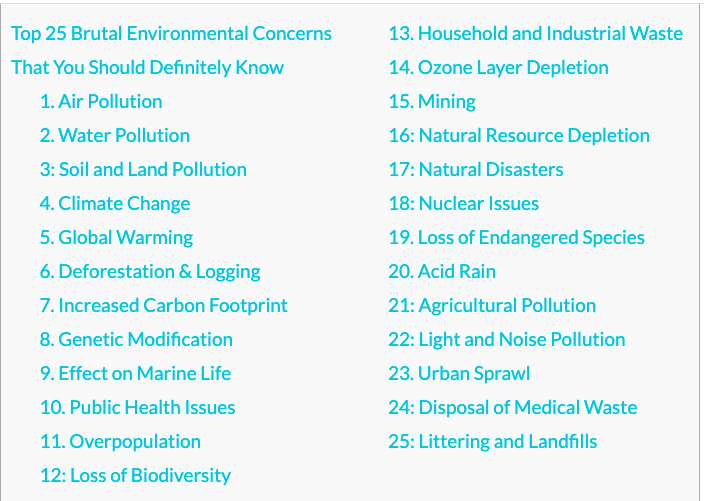
- Read this article, list your views:
Is The Coronavirus Lockdown Actually Healing The Planet ...
- Watch the videos below and reflect as a group on the various ways the planet is healing.:
- 1) Global warming improving.
- 2) Air pollution dropping
- 3) River Water becoming cleaner
- 4)Wild animals exploring more of the earth.
- Show the various ways our earth is benefitting from the lockdown and how natural resources are improving/thriving.
- Can the corona crisis help our planet to breathe again? ... I say its the beginning of a new world.... the world ...
- Scientists said there is one unexpected side-effect to the COVID-19 ... Your browser does not currently
- ...Satellite imagery show by Maxar technologies shows changes in movements and activities in cities due to ...Mar 19, 2020 - Uploaded by Geospatial World
- Vehicular emission and dust from construction sites have reduced helping India breather clean air. Watch the ...Apr 8, 2020 - Uploaded by Hindustan Times
- sika deer crosses road in Nara Japan, animal sightings as humans in ... Free-
roaming deer are a part of ... Apr 14, 2020 - Uploaded by Guardian News
Homework:
Complete any work not completed in class. -
Kia ora 7C1,
Welcome back to Term 3! I hope that you've had a restful break! During this week we will continue to work through our Assessment 2.
You will be given class time to continue working on this assessment that we started before the holiday break.
Context: Earth is Breathing
Topic:You are to discuss one environmental problem that occurs in New Zealand or any country in the world.
In your discussions think of the impact and consequences this environmental issue has on our natural resources and the economy. You must create a message of sustainability that addresses your problem.
Achievement Objectives:
Understand that events have causes and effects.
Understand how people participate individually and collectively in response to community challenges
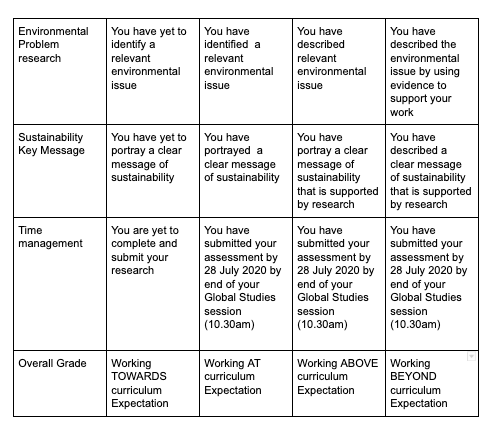
Task Instructions:
Working individually, choose an environmental issue that has impacts onto the environment as well as having consequences onto the economy of that country. Examples include poaching, deforestation, water or air pollution.
Use the following as a guide to describe and understand your environmental issue:
Location with a map
Cause of the problem( 3 causes)Why/ and who is responsible
Impacts of the problem( 3 impacts on the environment and 1 or 2 onto the economy)
Consequences of the problem( 3-4 ideas)Think of what would happen to future generations
In your own words, write a summary on what benefits the Covid 19 lockdown had on you, your community, nation and the planet. Explore how natural resources began to flourish/ heal and regenerate in this time, with regards to your selected research topic.
Key message on Sustainability. What can be done to stop or reduce this problem( 3-4 ideas) One idea must be in very good detail with images/ or a model used to explain your solution
3) Word Bank: Use some these words to support you in your write up:
Environment, negligence, greed, money, competition, natural resources,renewable resources, quality of air/ water/soil etc, sustainability, ecosystem , biodiversity, recycling, footprint/ carbon footprint, conservation, protection, responsibility, action, community care.
Please include a section in your assessment identifying the words from the wordbank that you have used.4) Your work should be presented digitally.
Resources to Support you:
Top 17 Environmental Problems | Renewable Resources …
3 Human Causes of Global Change | Global Environmental …
Environmental Problems, Causes, and solutions: An Open …
Top 25 Brutal Environmental Concerns That You Desperately …
5 essential lessons in sustainability messaging | GreenBiz
www.greenbiz.com › article › 5-essential-lessons-sustai...
May 18, 2016 - Today, sustainable business includes the mind, body and spirit. For years, messaging around business sustainability focused predominantly on ...
Images for sustainability message for the environmental pollution
Please email me if you have any questions. -
Kia ora 7C1,
This week you will be presenting your Assessment 2 to the class.
Context: Earth is Breathing
Topic:You are to discuss one environmental problem that occurs in New Zealand or any country in the world.
In your discussions think of the impact and consequences this environmental issue has on our natural resources and the economy. You must create a message of sustainability that addresses your problem.
Achievement Objectives:
Understand that events have causes and effects.
Understand how people participate individually and collectively in response to community challenges

Task Instructions:
Working individually, choose an environmental issue that has impacts onto the environment as well as having consequences onto the economy of that country. Examples include poaching, deforestation, water or air pollution.
Use the following as a guide to describe and understand your environmental issue:
Location with a map
Cause of the problem( 3 causes)Why/ and who is responsible
Impacts of the problem( 3 impacts on the environment and 1 or 2 onto the economy)
Consequences of the problem( 3-4 ideas)Think of what would happen to future generations
In your own words, write a summary on what benefits the Covid 19 lockdown had on you, your community, nation and the planet. Explore how natural resources began to flourish/ heal and regenerate in this time, with regards to your selected research topic.
Key message on Sustainability. What can be done to stop or reduce this problem( 3-4 ideas) One idea must be in very good detail with images/ or a model used to explain your solution
3) Word Bank: Use some these words to support you in your write up:
Environment, negligence, greed, money, competition, natural resources,renewable resources, quality of air/ water/soil etc, sustainability, ecosystem , biodiversity, recycling, footprint/ carbon footprint, conservation, protection, responsibility, action, community care.
Please include a section in your assessment identifying the words from the wordbank that you have used.4) Your work should be presented digitally.
Resources to Support you:
Top 17 Environmental Problems | Renewable Resources …
3 Human Causes of Global Change | Global Environmental …
Environmental Problems, Causes, and solutions: An Open …
Top 25 Brutal Environmental Concerns That You Desperately …
5 essential lessons in sustainability messaging | GreenBiz
www.greenbiz.com › article › 5-essential-lessons-sustai...
May 18, 2016 - Today, sustainable business includes the mind, body and spirit. For years, messaging around business sustainability focused predominantly on ...
Images for sustainability message for the environmental pollution
Please email me if you have any questions. -
Kia ora 7C1,
This term we have an exciting new Context : Innovations. For this idea we will research the way Ancient civilisations lived their lives and discover the many innovations that were designed. We will also examine to see how these past innovations have changed and have purpose in our lives today.
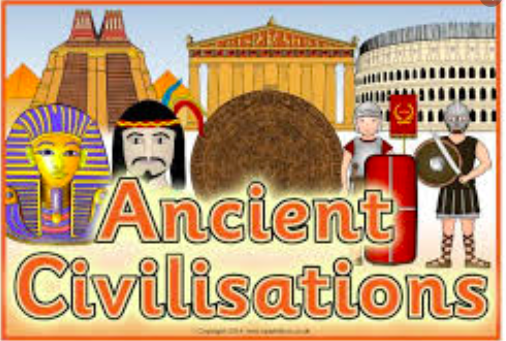
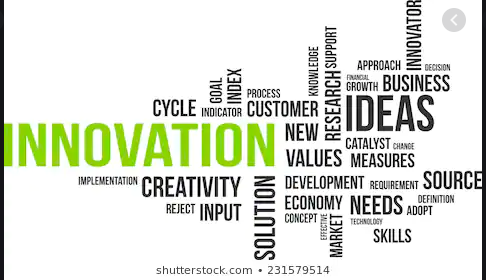
Success Criteria: I can/have...
- understood the meaning of Innovations
- connected the meaning of Innovations to to Ancient Civilisations
- discovered new words and multiple words that link with this idea
- Examined images from the past and and beginning to explored why people lived differently to us today.
Activities:
- What does innovation mean to you today. Give examples of products and technology that is useful to you. Eg the motor vehicle, boats, chairs and books to write in. Think for a moment: when do you think these products and technology was first innovated. Was it 10 years ago, 100 years or perhaps several thousand year ago?Give reasons for your response. class discussion on your ideas.
- I hope you have gathered that many products of today are linked to the ancient civilisations. Example: paper created by Ancient Egyptians using papyrus. Read this link:
Papyrus-Making in Egypt | Essay | The Metropolitan Museum ...
- By using coggle.com or a mind map or your choice, Lets create a brainstorm of words that link with Innovations eg: ideas, creativity, money, business, market and technology, as well as Ancient Cultures.Discussions on meaning of these words eg: invention, civilisation, trader, slave, merchant, irrigation, religion, cultures, class, caste, laws, wars, astronomy, maps.
- Examine the pictures on the white board on Ancient civilisations. table group discussions to identify landmarks linked to Ancient Cultures. Why were these amazing landmarks built. How where they built. Each table group research one landmark. Hopefully you would discover that it takes great skill to design these landmarks, as well that they all represent deep cultural importance.
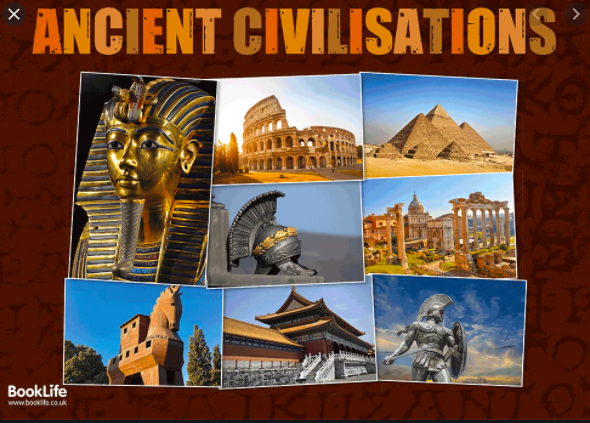
5) Have a look at the world map. Can you identify where these ( shown above )land marks are indicated.
6) Extension activity: Create a timeline of Ancient civilisations. See example here.
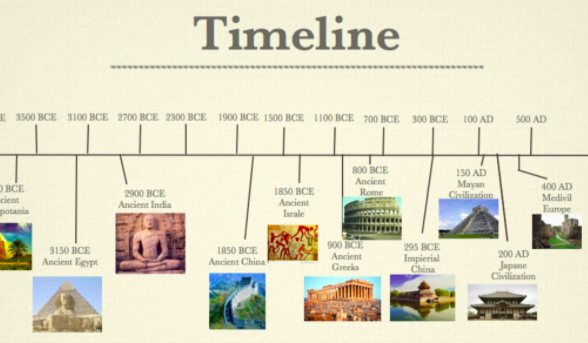
Resources:
What Exactly Is Innovation? - Forbes
Homework:
Complete any work not completed in class.EXPLORE / TŪHURA learning intentions:
- We are EXPLORING...to investigate the meaning of innovations and how this idea links to ancient cultures
- We are EXPLORING...to discover the many concepts linked to Ancient Civilisations and innovation
- We are EXPLORING...to research the many cultural innovations from around the world, begining with Ancient Egypt
-
Kia ora 7C1,
This week we will explore ideas on the way of life Ancient civilisations such as the Egyptians. The Egyptians lived a very glamorous life, before wars that ended their reign. During this time, several items were innovated and designed to improve their way of life. We will examine the location, culture and wars fought and how these impacted on people.
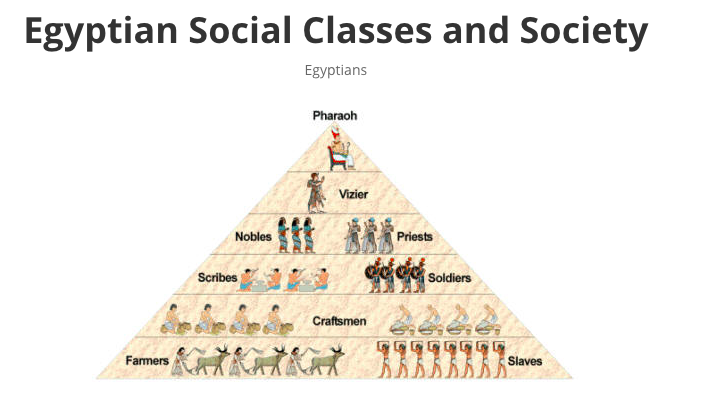
Achievement Objectives: Enter AO's here
Big Idea: Ancient civilisations
Learning Intentions: We are learning to (WALT)...
- to explore Egypt in terms of location( map work and distance from NZ)
- to understand the physical geography of Egypt ie land formations nature / climate in the past and today.
- to examine early cultural traditions in Egypt.
Success Criteria: I can/have...
- Examined the geography and began to explore the culture of early Egyptians.
Activities:
- Examine this ancient map of Egypt. What do you see as relevant an important features on tis map. Explain why.
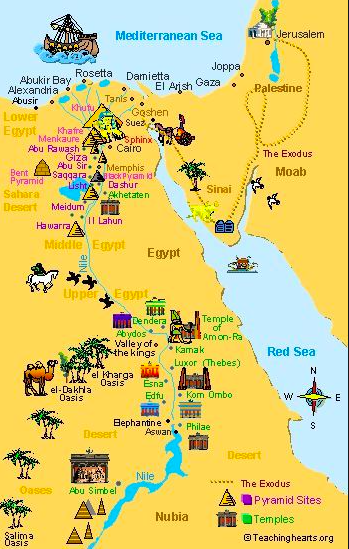
- Watch a video on the early Egyptians. Concentrate on the topography( landscape), cultural dress and way of life. Write down key ideas in your Global Studies book.
- The Ancient Egyptians culture was very unique in outlook and practice. Create a slide show on the the cultural identity of the early Egyptians in terms of dress, food, language, religion, arts, the class system, and land marks.
- Continue on your powerpoint: Include a slide for each of the following: : 1: Pyramids /2:Papyrus/ 3: the wheel. 4: the calendar/ 5:makeup and toothpaste. How were these designed/ what was its purpose/ do these still exist today/ has it been redeveloped.
- In this lesson, students will focus on learning about some of ancient Egypt's great queens - Nefertiti, Tiy, and Nefertari. Students will learn about what made these women powerful as well as how they influenced the lives of the common people by being held in such high regard by their husbands, the pharaohs.
- Research the clothing / jewellery and make up worn by the different classes or ranks. How does this compare to clothing and identity of early Maori people.
Resources:Ancient Egyptian Inventions - Discovering Ancient Egypt
https://discoveringegypt.com/ancient-egyptian-inventions/Ancient Egypt Technology and Inventions. | Fun Facts You Need to ipfactly.com › Articles
Egyptian Social Classes and Society - History
https://www.historyonthenet.com/the-egyptians-society/The social classes in ancient Egypt
www.reshafim.org.il/ad/egypt/people/social_classes.htm -
Kia ora 7C1,
I hope that you are well and that you are helping out at home. :)
For Global Studies this week you will be completing the weekly quiz.
The difference from the way that we usually do this in class is that you will be researching the answers for each question.
I have shared a doc on Google Classroom which you will use to complete your answers.(I have created an answer sheet for each student) The quiz slides will also be on Google Classroom. This will be uploaded on Monday morning.
I will be having a Google Meet from 9.30am - 10am on Tuesday 18/8. I will send you the invite at 9.30am. Please join via Google Classroom.
I will also do a shared Google Doc check-in on Thursday 20/8. Please respond to my doc as I will use this to indicate on our roll - whether you have made contact with me or not. :)
Your wellbeing is our priority, if you have any concerns about your learning tasks and workload, please contact me immediately.
-
Kia ora 7C1,
I hope that you are well and that you've managed to cope with your first week of Home Learning.
For Global Studies this week you will be completing the next weekly quiz.
As explained last week, the difference is that you will be researching the answers for each question.
I have shared a doc on Google Classroom which you will use to complete your answers.(I have created an answer sheet for each student) The quiz slides will also be on Google Classroom. This will be uploaded on Monday morning.
I will be having a Google Meet from 9.30am - 10am on Tuesday 25/8. I will send you the invite at 9.30am. Please join via Google Classroom.
I will also do a shared Google Doc check-in on Thursday 27/8. Please respond to my doc as I will use this to mark the roll:)
Your wellbeing is our priority, if you have any concerns about your learning tasks and workload, please contact me immediately.
-
Kia ora 7C1,
It is so good to be back after the lockdown! Welcome back to all of you!
Let's begin this session with the weekly quiz!
Next we'll have a look at a link shared by Savir:
https://www.tvnz.co.nz/shows/fair-go/consumer-heroes
This week we will explore ideas on the way of life Ancient civilisations such as the Egyptians. The Egyptians lived a very glamorous life, before wars that ended their reign. During this time, several items were innovated and designed to improve their way of life. We will examine the location, culture and wars fought and how these impacted on people.

Achievement Objectives: Enter AO's here
Big Idea: Ancient civilisations
Learning Intentions: We are learning to (WALT)...
- to explore Egypt in terms of location( map work and distance from NZ)
- to understand the physical geography of Egypt ie land formations nature / climate in the past and today.
- to examine early cultural traditions in Egypt.
Success Criteria: I can/have...
- Examined the geography and began to explore the culture of early Egyptians.
Activities:
- Examine this ancient map of Egypt. What do you see as relevant an important features on tis map. Explain why.

- Watch a video on the early Egyptians. Concentrate on the topography( landscape), cultural dress and way of life. Write down key ideas in your Global Studies book.
- The Ancient Egyptians culture was very unique in outlook and practice. Create a slide show on the the cultural identity of the early Egyptians in terms of dress, food, language, religion, arts, the class system, and land marks.
- Continue on your powerpoint: Include a slide for each of the following: : 1: Pyramids /2:Papyrus/ 3: the wheel. 4: the calendar/ 5:makeup and toothpaste. How were these designed/ what was its purpose/ do these still exist today/ has it been redeveloped.
- In this lesson, students will focus on learning about some of ancient Egypt's great queens - Nefertiti, Tiy, and Nefertari. Students will learn about what made these women powerful as well as how they influenced the lives of the common people by being held in such high regard by their husbands, the pharaohs.
- Research the clothing / jewellery and make up worn by the different classes or ranks. How does this compare to clothing and identity of early Maori people.
Resources:Ancient Egyptian Inventions - Discovering Ancient Egypt
https://discoveringegypt.com/ancient-egyptian-inventions/Ancient Egypt Technology and Inventions. | Fun Facts You Need to ipfactly.com › Articles
Egyptian Social Classes and Society - History
https://www.historyonthenet.com/the-egyptians-society/The social classes in ancient Egypt
www.reshafim.org.il/ad/egypt/people/social_classes.htm -
Kia ora 7C1,
Well done for your awesome work and focus last week! :)
On Tuesday we will continue with our Weekly General Knowledge Quiz. Let's try to improve on your previous scores! Please remember to watch the news and to keep up to date with current events.
I would like a few groups to volunteer to share your presentations that you started working on last week. After some discussion you will continue with your research and presentations by including information on Pyramids , Papyrus, The wheel, The calendar, Makeup and toothpaste... including researched answers to the questions below:
- How were these designed?
- What was its purpose?
- Do these still exist today?
- Has it been redeveloped?
Once we have completed the above research and shared your work with another group, we will have some discussions as a class about the questions above.
Next, we will explore ideas on the way of life Ancient civilisations such as the Egyptians. FOCUS this week is on innovations designed by the ancient Egyptians.
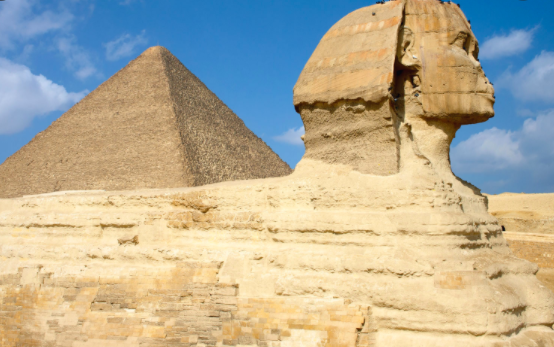
Achievement Objectives: Enter AO's here
Big Idea: Ancient civilisations
Learning Intentions: We are learning to (WALT)...
- to explore Egypt in terms of location( map work and distance from NZ)
- to understand the physical geography of Egypt ie land formations nature / climate in the past and today.
- to examine early cultural traditions in Egypt.
- Exploring and focusing on innovations from the Egyptians Ancient Era
Success Criteria: I can/have...
- Examined the geography and began to explore the culture of early Egyptians.
Activities:
- Continue with the activities mentioned above.

- Video: watch and discussionsThe ancient Egyptians would come to invent mathematics, geometry, surveying, metallurgy, astronomy ...Apr 23, 2019 - Uploaded by TED-Ed
Resources:Ancient Egyptian Inventions - Discovering Ancient Egypt
https://discoveringegypt.com/ancient-egyptian-inventions/Ancient Egypt Technology and Inventions. | Fun Facts You Need to ...
ipfactly.com › ArticlesEgyptian Social Classes and Society - History
The social classes in ancient Egypt
www.reshafim.org.il/ad/egypt/people/social_classes.htm -
Kia ora 7c1,
We will begin this week Tuesday with our weekly quiz, and once again look for a few groups to share the presentations that you were working on last week.
This week you will continue to work as a group where you will explore cultures from around the world and draw comparisons to Egyptian and Maori Cultures.The focus will be on traditions like tattoos, mummification, beautification and innovations designed by them, that are useful today or that has changed the world.
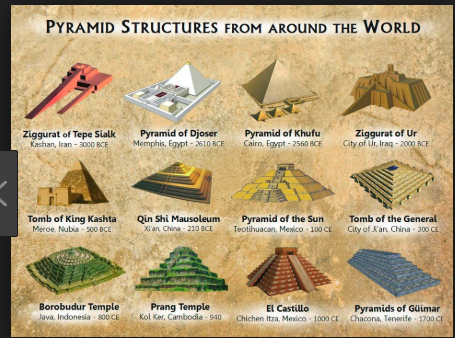
Big Idea: Ancient Civilisations and Innovations
Learning Intentions: We are learning to (WALT)...
- research a new ancient civilisation and examine how they lived and the innovations they created that changed the world
- Compare how this is similar or different to Ancient Egypt and Maori cultures
- document your ideas through a visual.
Success Criteria:
I have created a visual ( poster/ infographic or slideshow) based on how cultures from Ancient Eras have similarities and differences to Ancient Egypt and Maori cultures
Activities:
- See video on ancient cultures from around the world
- Lets create a mind-map on vocabulary from the past such as : cultural identity/ traditions/ heritage/ ceremonies, innovation, technology
- Refer to the image on white board on Ancient civilisations.Choose one culture for an example ancient Greece/ Indonesia/ China or India and research the following: Location, important ancient landmarks, cultural identity( clothing/ image/ religion) traditional practices eg marriages/ birth/ and what ceremonies to bodies when people pass on. Show art forms on their body eg: tattoos/ henna/ clay design. Compare at least two these with Ancient Egyptians and Maori Cultures/ Innovations they came up with that changed the world.
- Create a visual to showcase all your ideas.
- Present to the class during week 8.
Homework
Resources:
The civilization of the ancient Greeks - TimeMaps
Ancient Greece - History, mythology, art, war, culture, society, and ...
https://www.timemaps.com › Encyclopediaancientgreece.com/PLAN & DO / WHAKAMAHI learning intentions:
- We are PLANNING... to design a slide show so that we can...show our understanding of how ancient cultural societies have made innovations that are still valued in todays modern world
- Planning to create a model on one ancient landmark and determine how these were built in ancient times.
- We are planning to create a replica of an Ancient Egyptian Tablet.
-
Kia ora 7C1,
For this week you will be completing your presentations and then sharing your work with other groups to compare how you have each explored cultures from around the world and drawn comparisons to Egyptian and Maori Cultures. The focus will be on traditions like tattoos, mummification, beautification and innovations designed by these ancient cultures.
We will start off with our weekly quiz as usual on Tuesday. :) Please watch the news.
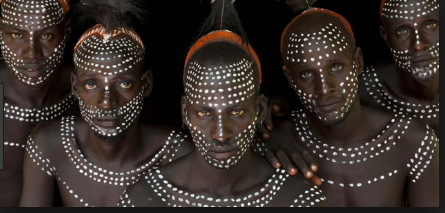
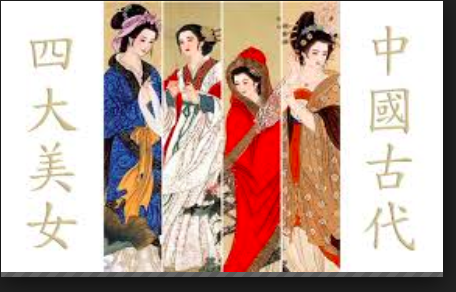

Big Idea:Ancient Civilisations and Innovations
Learning Intentions: We are learning to (WALT)...
- research a new ancient civilisation and examine how they lived whereby there where changes to their bodies.
- Compare how this is similar or different to Ancient Egypt and Maori cultures
- document your ideas through a visual.
Success Criteria:
I have created a visual ( poster/ infographic or slideshow) based on how cultures from Ancient Eras have similarities and differences to Ancient Egypt and mOARI cultures
Activities:
- See video on ancient cultures with respect to tattoos, makeup, clothing and weapons used from your chosen culture and compared to Maori culture.
- Use and build on you a mind-map on vocabulary from the past such as : cultural identity/ traditions/ heritage/ ceremonies and image. Think of ancient concepts here.
- Refer to the image on white board on Ancient civilisations.Choose one culture for an example ancient Greece/ Indonesia/ China or India and research the following: Location, important ancient landmarks, cultural identity( clothing/ image/ religion) traditional practices eg marriages/ birth/ and what ceremonies to bodies when people pass on. Show art forms on their body eg: tattoos/ henna/ clay design. Compare at least two these with Ancient Egyptians and Maori Cultures.
- Create a visual to showcase all your ideas.
- Present to the class during week 8.
Homework
Complete you work, as this is due next week.
Resources:
The civilization of the ancient Greeks - TimeMaps
Ancient Greece - History, mythology, art, war, culture, society, and ...
https://www.timemaps.com › Encyclopediaancientgreece.com/ -
Kia ora 7C1 and welcome to Term 4. I hope everyone had a great break and you are well charged for our learning this term.
As requested, link from our quiz about the cougar:
https://edition.cnn.com/videos/us/2020/10/13/utah-hiker-cougar-video-orig-sb.cnn
Context: Innovations( related to natural disasters earthquakes and Volcanoes). This is closely related to Planets and Beyond. Within this idea. you will virtually travel to countries that have earth quakes and volcanoes.Also , we will look into ideas about space and its wonders!
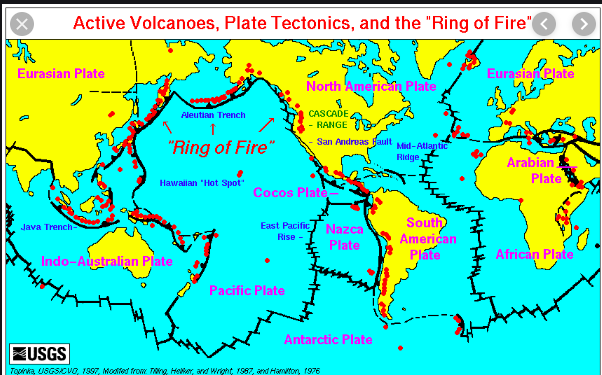
Context: Innovations( related to natural disasters earthquakes and Volcanoes)
Learning Intentions: We are learning to (WALT)...
- understand our new context through brainstorming ideas. Also examining prior knowledge on this topic.
- learn new concepts and definitions
- examine the world map and identify countries we know, as well as we have not heard off
Success Criteria: I can/have...
- brainstormed idea on around the world in 80 days and linked earthquakes and volcanoes to this idea
- researched the meaning of new concepts that link with earthquakes and volcanoes
- viewed the map of the world with special links to countries that have earthquakes and volcanoes.
Activities:
- By examining the image of the world map on the white board list as many countries as you can that are prone to earthquakes and volcanoes. Why do you think these countries have these type of natural disasters.
- By using a Mind map such as coggle.us, brainstorm at least 10 words that link with around the world in earthquake /volcanic countries
- Find the definitions of the following concepts: natural disasters/ earthquakes/ volcanoes/ climate change/ tectonic plates/ ring of fire/ continental drift.
- Watch the video on what do you need to travel overseas. Reflect on this video with what you know and what information is new.
- Look again at the map of the world that has earthquakes and volcanoes. What are the requirements for New Zealanders to travel to two of these countries. With a buddy, research these requirements.
Resources:
https://www.worldatlas.com/articles/the-world-s-10-most-earthquake-prone-countries.html
https://www.livescience.com/50451-10-hazardous-countries-volcanoes.html
https://online.mhjc.school.nz/pluginfile.php/186992/course/section/378494/Planet%20earth.png
http://NEWER VERSION: https://www.youtube.com/watch?v=UgRHZ5jDPUU Watch 3.3 billion years of continental ... Apr 21, 2015 · Uploaded by Algol
-
Kia ora students,
For this activity you will be working in pairs. Your learning will explore the journey of a tourist to an earthquake zone country. You are required to document this activity in the form of a blog.This a a build up activity, where each week you will be given different questions/ instructions for you earthquake zone travel experience.

Achievement Objectives: Enter AO's here
Big Idea:Innovation
Learning Intentions: We are learning to (WALT)...
- Create a blog using blogger or any other you are familiar with.
- Research and chose one earth quake country of your choice, anywhere in the globe. Different countries for each pair.
- Read and examine the process for travelling to another country.
- Determine and understand the scientific process of an earthquake
Success Criteria: I can/have...
- created a blog.
- chosen one earthquake country that I will be exploring in good detail
- researched the scientific process of a earthquake and linked this to the country I am virtually travelling too.
- Understand the process and information required to travel to this country
Activities:
- By working in pairs you must first chose a blog site you will use for this this activity. Also through reading and discussions select an earthquake country you wish to examine.
- In detail explore what is an earthquake. How is it created and use images to show your discussions/research.
- Use the following template to document your research in your blog: Create a poster on how earthquakes are formed, the impacts and consequences it may bring. Also show a map of an earthquake country.
Homework:
Read further on earthquakes and how they are caused.Resources:
Blogger.com
Steps of earthquake formation - eSchooltoday
Earthquake Facts for Kids
easyscienceforkids.com › Earth Science › Natural Disasters -
Kia ora students and welcome to Week 3. For this week you will be examining the impacts and consequences of earthquakes.
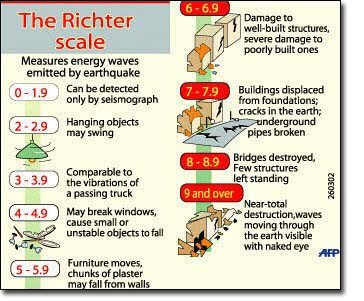
Achievement Objectives:
Big Idea: Innovations
Learning Intentions: We are learning to (WALT)...
- research the numerous impacts earthquakes have onto people/ the economy and the environment
- examine the consequences of earthquakes for that location and country
- use insightful images to demonstrate the impacts
- to discover and use new terminology
Success Criteria: I can/have...
- researched in detail the impacts and consequences of earthquakes onto people/ places and the economy.
- used images to show-case my discussions
- relate these impacts to my case study
Activities:
- see video on the impacts on earthquakes in Pakistan and Japan. Write down what you see and the effects this has at that time.
- Research the earthquakes that occurred in Christchurch 2011. Look for 2 newspaper articles on this event and write a short summary of this historical natural disaster.
- Through a case study approach: research the many impacts and consequences earthquakes onto people/ economy and the environment.Think of how people are affected/ the damage to the environment/ the costs to rebuild. How long does it take to have that location/ country continue with" business as usual..
- Link these impacts with your case study location. For this also include newspaper articles that shows the effects of the earthquake there.Update your blog by writing your findings here.
- Use words like richer scale, seismic waves, energy, warning signals magnitude, and
- Examine what are the potential consequences of an earthquake. Research ideas on landslides, tsunami, and liquefaction.What are these process and the effects it has as well.
- Research one cartoon that shows the impacts of the earthquakes. Provide an analysis of this in your blog.
ReSources:
BBC - GCSE Bitesize: Effects of an earthquake
Consequences of earthquakes (Fr) - Seismo at School
Homework:
Work on your survival kit -
Kia ora students and welcome to Week 4. Our focus this week is been prepared for an earthquake.

Achievement Objectives: Enter AO's here
Big Idea: Innovations
Learning Intentions: We are learning to (WALT)...
- Understand what does it involve to be prepared for an earthquake
- Determine are the laws and regulations in Nz to get through an earthquake
- determine get through strategies elsewhere in the world.
- understand what is a survival kit and its use during an earthquake.
- researching emergency contact details during an earthquake
- create plan what would you do if you where at home during an earthquake.
Success Criteria: I can/have...
- understood get through strategies both in New Zealand and elsewhere in the world in case of an earthquake.
- researched and understood what is a survival kit and its use
- researched important emergency numbers in nZ in case of an earthquake
- created a plan what to do if at home during an earthquake.
Activities:
- Watch video on earthquake in Christchurch, NZ, 2011. Reflect on what you see: before during and after the earthquake.
- Research how would you be prepared in the event of an earthquake in NZ. Research what the the get through strategies.
- Explain what is meant by drop cover hold.
- Research what are the get thorough strategies during an earthquake in two other countries in the world. how is this different to NZ.
- Explain what plan of action you would have to get through an earthquake if you were home.
- Research important emergency numbers to get help during and after and earthquake.
- Research what is a survival kit and the contents within it. How would you use each device/ item. What is its purpose.
- Draw what you would include in your personalised survival kit. Be imaginative here but also practical.
Resources:
Search Results
Earthquake - Get Ready Get Thru
Get Thru
New Zealand ShakeOut - Get Ready!
Earthquake: A guide to getting through the aftershocks | Stuff.co.nz
www.stuff.co.nz/.../nz-earthquake/.../earthquake-a-guide-to-getting-through-the-aftersho...Survival Kits | Emergency Preparedness Kit | Red Cross
Emergency Survival Items & Getaway Kit - Get Ready Get Thru
getthru.govt.nz/how-to-get-ready/emergency-survival-items/Homework:
Assessment: design creation and demonstration of your survival kits. -
Kia ora 7C1 and welcome to week 5.
This is an exciting week as you will demonstrate your survival kits.
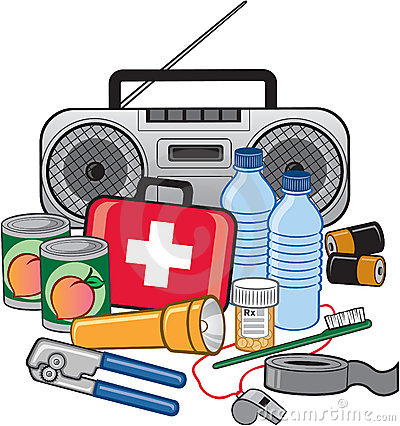
Big Idea: Innovations
Learning Intentions: We are learning to (WALT)...
- examine what is a survival kit and why this is necessary if you live in an earthquake country
- create a survival kit where items are labelled
- demonstrate the use of each item with clarity
Success Criteria: I can/have...
- understood the value of a survival kit
- created a survival with each item labeled
- demonstrated its use with clarity and confidence
Activities:
- By watching the video on earthquakes, and the need for a survival kit, express what are your views.
- Complete the creation of your survival kit in class by making sure it is practical yet having a few unique items as well.Be creative and innovative.
- Each student is to demonstrate your survival kit, where you are assessed on the design and creativity, labeled items, clear demonstrations and reflections of the need for New Zealanders to keep a survival kit. Clear and good communication skills.
- Also, you are to create a slideshow to inform children in very poor countries what they can do to get through an earthquake using everyday items at home. This activity does require research but also for you to inference or use intelligent guesses.
Resources:
Emergency Survival Items & Getaway Kit - Get Ready Get Thru
getthru.govt.72 Hour Survival kits | Prepare
nz/how-to-get-ready/emergency-survival-items/Pack a Survival Kit
Homework:
Read on Volcanoes: science behind this natural occurence -
Kia ora 7C1 and welcome to Week 6.
This week you will continue to work on your survival kits this week.
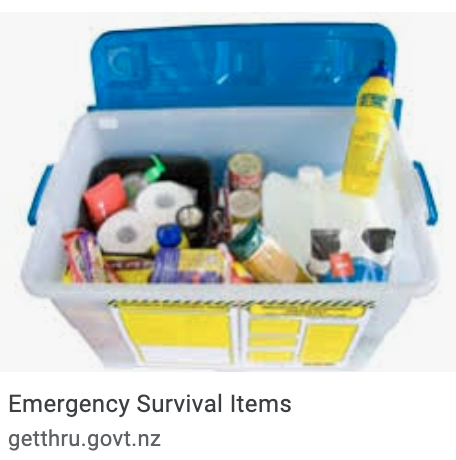
Big Idea: Innovations
Learning Intentions: We are learning to (WALT)...
- examine what is a survival kit and why this is necessary if you live in an earthquake country
- create a survival kit where items are labelled
- demonstrate the use of each item with clarity
Success Criteria: I can/have...
- understood the value of a survival kit
- created a survival with each item labeled
- demonstrated its use with clarity and confidence
Activities:
- By watching the video on earthquakes, and the need for a survival kit, express what are your views.
- Complete the creation of your survival kit in class by making sure it is practical yet having a few unique items as well.Be creative and innovative.
- Each student is to demonstrate your survival kit, where you are assessed on the design and creativity, labeled items, clear demonstrations and reflections of the need for New Zealanders to keep a survival kit. Clear and good communication skills.
- Also, you are to create a slideshow to inform children in very poor countries what they can do to get through an earthquake using everyday items at home. This activity does require research but also for you to inference or use intelligent guesses.
Resources:
Emergency Survival Items & Getaway Kit - Get Ready Get Thru
getthru.govt.72 Hour Survival kits | Prepare
nz/how-to-get-ready/emergency-survival-items/Pack a Survival Kit
Homework:
Read on Volcanoes: science behind this natural occurence -
Kia ora 7C1 and welcome to Week 6.
This week you will continue to work on your survival kits. Please be ready to present your work to the class next week.

Big Idea: Innovations
Learning Intentions: We are learning to (WALT)...
- examine what is a survival kit and why this is necessary if you live in an earthquake country
- create a survival kit where items are labelled
- demonstrate the use of each item with clarity
Success Criteria: I can/have...
- understood the value of a survival kit
- created a survival with each item labeled
- demonstrated its use with clarity and confidence
Activities:
- By watching the video on earthquakes, and the need for a survival kit, express what are your views.
- Complete the creation of your survival kit in class by making sure it is practical yet having a few unique items as well.Be creative and innovative.
- Each student is to demonstrate your survival kit, where you are assessed on the design and creativity, labeled items, clear demonstrations and reflections of the need for New Zealanders to keep a survival kit. Clear and good communication skills.
- Also, you are to create a slideshow to inform children in very poor countries what they can do to get through an earthquake using everyday items at home. This activity does require research but also for you to inference or use intelligent guesses.
Resources:
Emergency Survival Items & Getaway Kit - Get Ready Get Thru
getthru.govt.72 Hour Survival kits | Prepare
nz/how-to-get-ready/emergency-survival-items/Pack a Survival Kit
Homework:
Read on Volcanoes: science behind this natural occurence -
Kia ora 7C1 and welcome to Week 7
As promised, this week you will have Tuesday to work on your survival kits. Groups will share their kits on Thursday. End of year trip to Rainbows End on Friday. :)

Big Idea: Innovations
Learning Intentions: We are learning to (WALT)...
- examine what is a survival kit and why this is necessary if you live in an earthquake country
- create a survival kit where items are labelled
- demonstrate the use of each item with clarity
Success Criteria: I can/have...
- understood the value of a survival kit
- created a survival with each item labeled
- demonstrated its use with clarity and confidence
Activities:
- By watching the video on earthquakes, and the need for a survival kit, express what are your views.
- Complete the creation of your survival kit in class by making sure it is practical yet having a few unique items as well.Be creative and innovative.
- Each student is to demonstrate your survival kit, where you are assessed on the design and creativity, labeled items, clear demonstrations and reflections of the need for New Zealanders to keep a survival kit. Clear and good communication skills.
- Also, you are to create a slideshow to inform children in very poor countries what they can do to get through an earthquake using everyday items at home. This activity does require research but also for you to inference or use intelligent guesses.
-
Kia ora 7C1,

Wow! Today is our final session! What an amazing class you've been! Thank you so much! Even though we've all had an unsettling year you have all shown such resilience! Well done!
For our session today please complete the mapwork activity in your books.
No need for devices! Once that is done you can attempt the weekly quiz on Google classroom. :)

